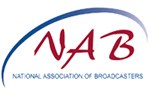
Top stories


EducationFrom adversity to opportunity: African education’s revival strategies
Sanjeev Mansotra 8 hours


Marketing & MediaThe Odd Number named Financial Mail AdFocus Mid-Sized Agency of the Year
The Odd Number 12 hours


More news













This is intended to address what the NAB believes are shortcomings and inaccuracies in the MASA letter and clarify its position about the current levy collection system and the funding of SAARF and the ASA.
The current levy debate within the industry and the "pending industry crisis" are not new issues and will not come as a surprise to any informed industry observer. The NAB initiated the most recent round of debate on the future funding of SAARF and the ASA and on the restructuring of the levy collection system.
In June 2009, NAB members unanimously agreed to support a number of proposed changes to the current system and embarked on a process of consultation and engagement with all industry stakeholder groups that included MASA, Association for Communication and Advertising (ACA), Advertising Media Forum (AMF) and the board of SAARF. The NAB proposals were formally presented to all of the above groups. An industry forum was established in November 2009 to further investigate these proposals and seek industry wide consensus.
The NAB continued to participate actively in this process until November 2011, when the Media and Marketing Collection Agency (MAMCA) chairperson and MASA representative on this body informed NAB that consensus looked unlikely and that the NAB would have to move to a direct funding model.
The NAB proposal was instigated by growing concerns over the future funding of SAARF and the ASA and evolved from a detailed analysis of the future research requirements within the broadcast environment. In April 2009, the NAB commissioned and funded, on behalf of the industry, an independent evaluation of the future broadcast landscape through Genesis Analytics (the Genesis report).
This report highlighted the limitations of current research funding and methodologies in a burgeoning broadcast market having to contend with the introduction of new digital platforms, numerous new channels and technologies such the PVR/DVR.
The NAB proposals also declared continued support for the roles of both SAARF and the ASA and commitment to the principles of independent industry research through a joint industry committee structure, funded by levy contributions.
The NAB proposals were intended to be a road map for the future of industry research, initially within the broadcast sector. Its specific objectives are:
Fundamentally, the NAB position has not changed in the intervening period and a joint industry committee structure, funded universally by a levy, remains the association's preferred solution to the funding of SAARF and the ASA.
The beginnings of the current threat to industry structures can be traced back to the Print Media South Africa's (PMSA) decision in 2003 to unilaterally withdraw from the established levy-collection process in favour of a direct contribution that print members would determine independently.
The NAB has to wonder why the marketing industry is only now beginning to ponder the ramifications of this decision some eight years after the event.
What has changed in the interim is the growing realisation, within the NAB, that there must be fair and equitable division of responsibility for the funding of SAARF and the ASA. NAB members are also of the opinion that the current research structure, through tools such as AMPS, RAMS, TAMS, etc., may no longer be ideal and is increasingly inequitable.
Notwithstanding the PMSA's withdrawal from the levy mechanism, the association has continued to collect the levy and implement increases when funding requirements have dictated. Furthermore, the NAB and its members continued to meet their commitments and obligations to MAMCA.
However, with the withdrawal of Out of Home Media SA (OHMSA) from the levy mechanism, the association found itself in an untenable position - the broadcasters were the only media-owner group supporting the levy model and contributing an estimated 70% of the total funding of SAARF and the ASA.
The consequence of the withdrawal of the above associations from the levy collection system is that the NAB had no alternative but to consider giving notice of its withdrawal. It would be unfair to its members to do otherwise.
In making this decision, the association has been at pains to point out that the intention is to continue to provide funding on the established basis - 1% of net advertising income.
The NAB shares many of the concerns highlighted in the MASA letter and, as previously stated, wholeheartedly supports both SAARF and the ASA. However, it does not believe that the current issues represent a 'crisis'.
From the outset, the association has sought a solution that would see funding continue to come from a levy structure, recognised as a joint and equal contribution from both media owners and marketers.
The NAB will continue to make every possible effort to find a long-term solution to these issues and will continue to engage with all industry stakeholder groups to ensure a fair and equitable outcome.